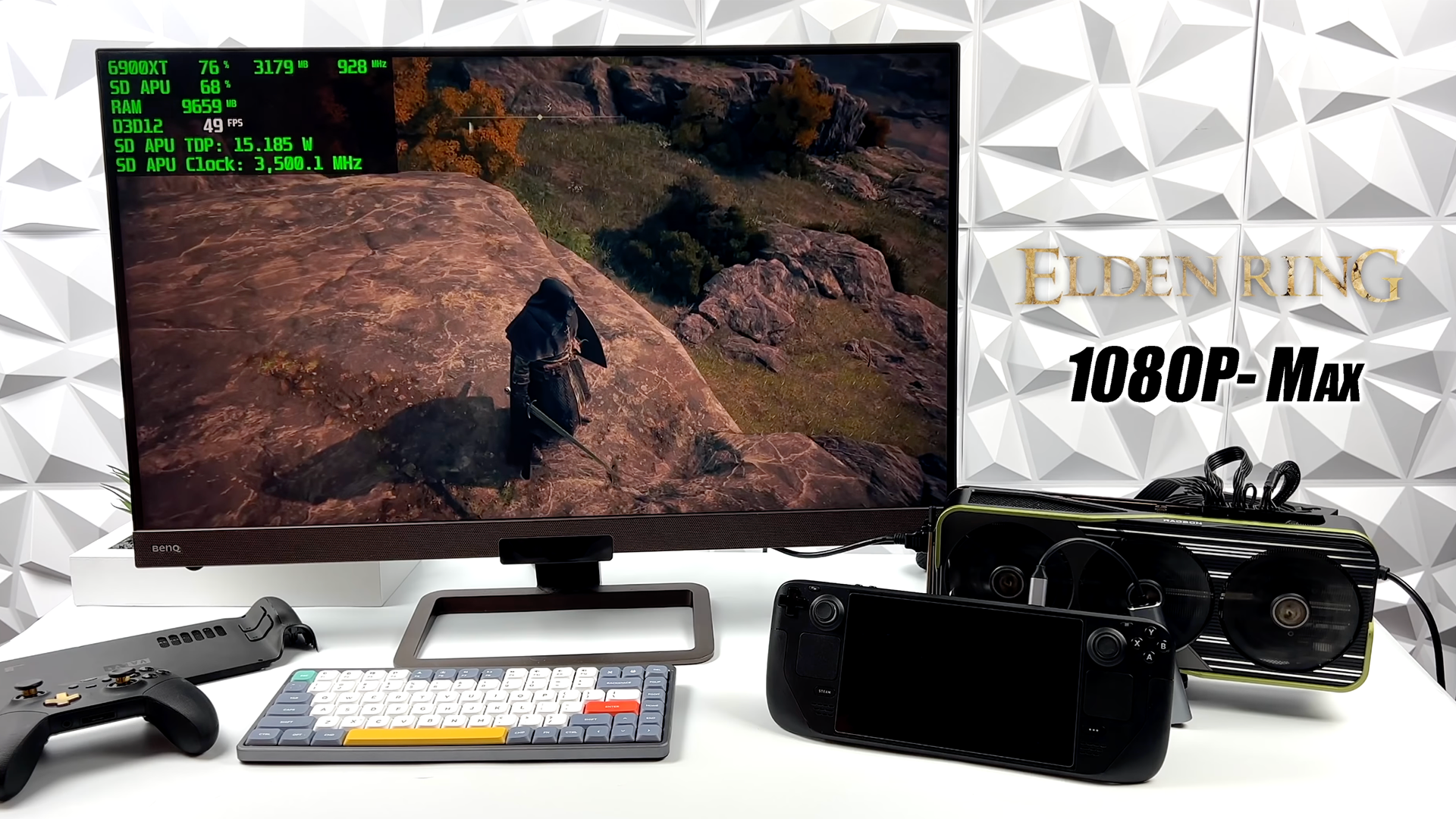When Valve released its Linux-based Steam Deck portable game console with loads of ports and interfaces, we fully expected this product to see some interesting projects. We’ll undoubtedly see other peripherals and gadgets tailored for Steam Deck users, but enthusiasts can do something completely unexpected. Journalists from the ETA Prime YouTube channel decided to add some graphics oomph to the Steam Deck and managed to connect a Radeon RX 6900 XT graphics card to the console.
Since Valve’s Steam Deck does not have Thunderbolt 3/4 port, they had to use its M.2 slot featuring a PCIe x4 interface and a special adapter that allows plugging an add-on card into such a slot. Usage of the M.2 slot naturally reduces local storage capacity, which means that they had to use a microSD card to store their games, and such cards are considerably slower than M.2 SSDs. But for the sake of experiment and entertainment, things worked just fine. They also installed Windows 11 and the latest drivers, though likely future mods could be made to work with Linux.
Image 1 of 4
Image 2 of 4
Image 3 of 4
Image 4 of 4
Adding one of the best graphics cards for gaming to a system based on a quad-core, low-power APU doesn’t really make a lot of sense in the normal world. AMD’s Radeon RX 6900 XT — the ASRock RX 6900 XT Formula if we’re being precise — will inevitably run into CPU bottlenecks. But these things must be done, for science!
Adding an external graphics card to the portable game console naturally makes it immobile. The Steam Deck essentially becomes an entry-level desktop with a quad-core custom APU, paired with an obscenely huge graphics card via external cables. Messy, but beautiful. It’s too bad about the lack of faster storage, which will inevitably limit gaming options.
As expected, the Radeon RX 6900 XT was substantially faster than the built-in GPU. In this configuration, the Steam Deck could actually handle such titles as The Witcher 3, GTA5, Elden Ring, Cyberpunk 2077, and God of War running at 1080p or even 4K. That’s a significant upgrade compared to the integrated APU, which at present can’t even run Cyberpunk 2077 at all.
We’ll call the experiment a success, as it proves it’s possible to improve the Steam Deck’s performance using an external graphics card. Now we just need an M.2 adapter connected to a dock that offers additional PCIe lanes for storage and graphics. Or not, since people would be better off just buying a separate desktop PC. The Steam Deck’s promise lies in its portability and fixed set of hardware, but we can’t blame the people at ETA Prime for trying.
